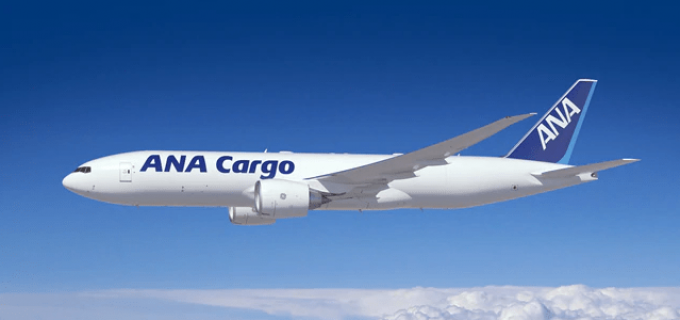Airfreight's forward planning prevents chaotic Q4 rate hikes
Forward planning by shippers appears to have given the air cargo market a strong – ...
UPS: MULTI-MILLION PENALTY FOR UNFAIR EARNINGS DISCLOSUREWTC: PUNISHEDVW: UNDER PRESSUREKNIN: APAC LEADERSHIP WATCHZIM: TAKING PROFITPEP: MINOR HOLDINGS CONSOLIDATIONDHL: GREEN DEALBA: WIND OF CHANGEMAERSK: BULLISH CALLXPO: HEDGE FUNDS ENGINEF: CHOPPING BOARDWTC: NEW RECORDZIM: BALANCE SHEET IN CHECKZIM: SURGING
UPS: MULTI-MILLION PENALTY FOR UNFAIR EARNINGS DISCLOSUREWTC: PUNISHEDVW: UNDER PRESSUREKNIN: APAC LEADERSHIP WATCHZIM: TAKING PROFITPEP: MINOR HOLDINGS CONSOLIDATIONDHL: GREEN DEALBA: WIND OF CHANGEMAERSK: BULLISH CALLXPO: HEDGE FUNDS ENGINEF: CHOPPING BOARDWTC: NEW RECORDZIM: BALANCE SHEET IN CHECKZIM: SURGING

Japan’s ANA Cargo has forged ahead with the deployment of its first Boeing 777 freighter, despite declining volumes resulting from the US-China trade war.
Earlier this month, the carrier debuted the freighter on cargo flights between Tokyo and Shanghai, via Osaka, and from October, it will use the 777F on a direct service to Chicago.
“The Boeing 777F aircraft elevates the ANA fleet to a new level,” said ANA Cargo president Toshiaki Toyama.
“They are significantly larger than the B767Fs used to ferry cargo in Asia, giving ANA additional flexibility in how the aircraft are used. They will aid in the expansion of our services to include a whole new set of customers and increase ANA’s ability to safely transport larger cargo.”
ANA said the 777F had the ability to transport large items such as aircraft engines and semiconductor manufacturing equipment, as well as cargo requiring a high degree of care, including lithium batteries and pharmaceuticals.
However, the dispute between Japan’s two biggest trading partners has dented the carrier’s volumes this year. During the second half of Japan’s financial year, running between October and March, ANA’s international cargo fell 9.3% year on year, to 370,705 tons; while the latest figures, for May, show uplift of 60,953 tons, down 12.1% year on year.
Traffic volumes to China between January and March were particularly affected, plummeting 24%, compared with the same period last year, according to local media.
Hiroshi Sugiguchi, ANA Cargo’s executive vice president for global marketin, told The Loadstar: “Not only is cargo volume between China and US down, but trade between Japan and China also showed rapid decline, due to trade friction between China and North America.
“Semiconductor products and electronic components suffered the most. Furthermore, factory automation components also suffered a decline in demand.”
The bleak outlook was echoed by DHL in its latest global trade barometer, which notes air cargo volumes of capital equipment, machinery, hi-tech, chemicals and machinery parts are all expected to decelerate to near-zero growth.
Charles Kaufmann, president of DHL Global Forwarding Japan, added: “Ongoing volatility and uncertainty in global trade conditions, coupled with indirect exposure to the tariffs being wielded in the US-China dispute, have created conditions where Japan’s key manufacturing industries are exercising more caution than ever before.”
Notably, Nippon Express, ranked as the seventh-largest air freight forwarder in the world by consultant Armstrong & Associates, saw its export volumes from Japan in April, May and June drop 30%, 38% and 42%, respectively, according to results published on its website.
For ANA Cargo, the softening air cargo market has also meant joint-venture partner Lufthansa Cargo cutting capacity from its schedule. This has not affected ANA’s operations, however, Mr Sugiguchi claimed.
“The interim capacity reduction gives us the same level, or a bit more capacity compared with 2018, because ANA started a new passenger flight service between Tokyo and Vienna in February.”
Furthermore, he said, ANA was able to pick up volumes when fellow Japanese carrier Nippon Cargo Airlines suspended its operations in June last year, following concerns over maintenance records.
But, looking ahead to the peak season, Mr Sugiguchi said ANA was expecting “a recovery in the semiconductor market after autumn”.
Comment on this article